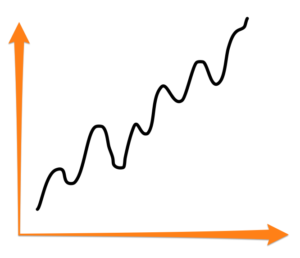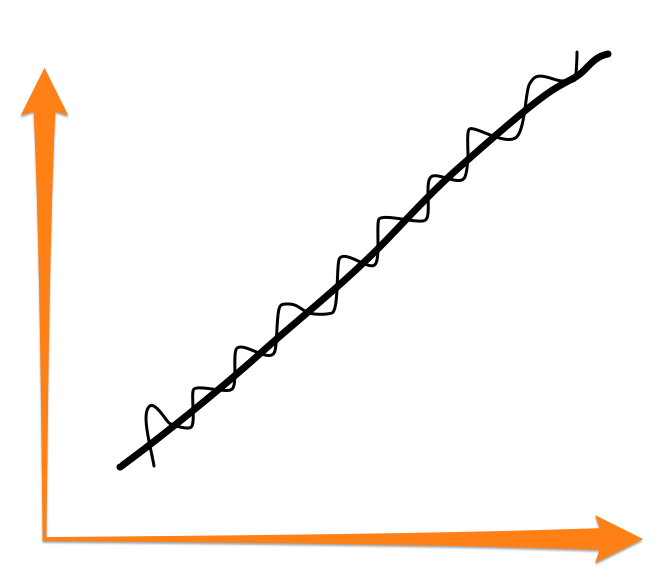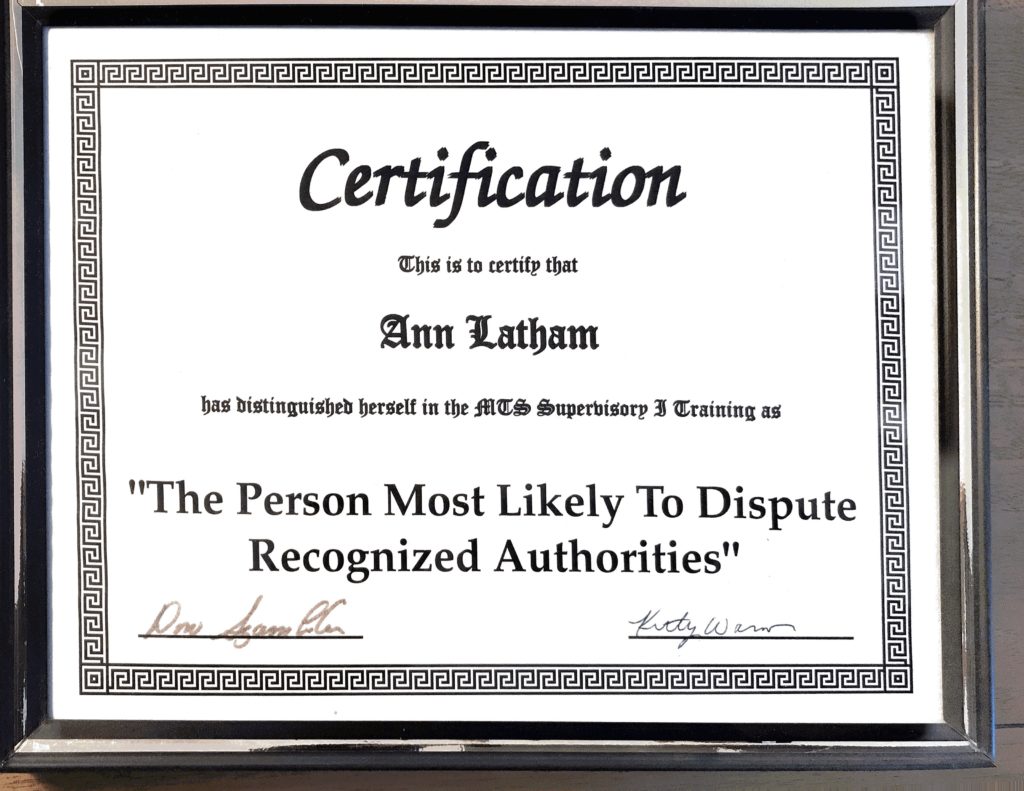
Career Map – example
I was stumped. I was at a talk on resilience at Alan Weiss’ Million Dollar Consulting Convention and the speaker, Richard Citrin, asked us to map our careers. He demonstrated using himself, much like the diagram at right, describing each achievement and setback through his long career. Then he gave us some time to do the same.
I struggled. I tried to think back. But after a few minutes, I realized I couldn’t do what he had done. First off, I don’t look back all that much. Perhaps it’s a fault of mine, but I’m usually just too busy looking forward.
Second, I couldn’t separate myself from my career. It was looking back on a long, circuitous journey of memories. I sold minnows and drove school buses early on because seasonal labor seemed a good way to avoid getting trapped behind a desk and unable to take spontaneous bike or wilderness canoe trips.
I taught math until the students asked me why the heck they needed to learn math, at which point I quit to find out for myself.
My memories of corporate America followed in remarkably similar fashion. I wrote custom software to make giant hydraulic actuators simulate earthquakes. My most vivid memory involved discovering a bug in the underlying software that made that something like 70-ton actuator take an unplanned leap at the customer’s site in Japan.
For years I paid undue attention to electrical power in England after being responsible for the communications software that synchronized and maintained multiple levels of redundancy for the computers that controlled the generation and transmission of power in Great Britain.
And then there was the time when I, along with everyone else in the company, was given a frozen turkey the Friday before Thanksgiving and told not to return.
In my first foray beyond software, my favorite memory was single-handedly reducing seven towering insurance men in black power suits to awe and speechlessness after describing how I’d handled Y2K for my company’s 830 products and 11 manufacturing sites worldwide. All while wearing khakis.
How do you plot memories like these on a double axis career chart?
It seemed there was only one way. I needed to forget the memories, and the fun, and dredge my past for evidence of traditional success. I needed to conjure a mental image of my last resume and recall companies, job titles, and promotions. In other words, I needed to examine my career in terms of other people’s definitions of success. Not mine.
That is when I figured out how to draw my career map:

Why does it look like this?
Because I am a better, smarter person every day.
Yes, there are little wobbles representing thrills of accomplishment and disappointments, but they come and go while the overall trajectory is upward.
My definition of success has never had much to do with traditional success. The only framed certificate I have ever valued or saved was unique to me:

It’s not that I don’t have aspirations. I have some serious aspirations. And people who know me are pretty impressed with my accomplishments, courage, and willingness to embark on new ventures. But I don’t separate myself from my career, nor do I let my career control or define me.
In my view, every experience ends either in learning or learning plus some measure of success. I don’t think in terms of failure.
I see no value in even thinking about my life in terms of dips and pits.
“Life is a journey” is the ultimate cliche, but it is true. When you set goals and reach them, you discover that you still haven’t arrived. You never arrive. A goal is not a destination. It’s just a blip on the journey. Success is almost meaningless, once achieved, because you will inevitably want more.
Or at least I hope so. I think the alternative is a huge mistake. When my husband and I bought our first house, the seller was so excited. He was thrilled to be getting rid of all the maintenance and yard work. He was thrilled to be retiring the same week. He wanted to slow down and just relax. After years of hard work, he thought he had finally arrived.
The next month, he had a heart attack. I always figured he had walked away from everything that gave him a reason to get out of bed in the morning. That thought has stuck with me ever since.
After explaining my career map to others, I shifted my thoughts to resilience, the topic of the talk. I think the resilient focus learning. On their advantages and how to move forward. On adapting. On seeing and pursuing opportunities of interest. On acknowledging their changing interests. On refusing to be defined by others or by their past.
I think the last thing resilient people do is label and dwell on the dips and pits of their lives.
My challenge to you:
- Are you measuring your success on your own terms or someone else’s?
- What would make you more resilient?
- What might you do differently after reading about this experience of mine?
Ann Latham is an expert on strategic clarity and author of The Clarity Papers.
Take The Clarity Quiz! Actually, take them all! Download a free copy of The Clarity Quiz Collection.
![]()
This article first appeared on Forbes, April 22nd, 2018.


Comments are closed.